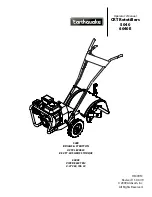
Using Hydraulic Fluid (Optional)
If using hydraulic fluid to insert and retract the insertion shaft, the customer must provide a way to drain the hydraulic fluid
from the insertion cylinder.
Welker recommends adding a pressure gauge to the hydraulic supply so that the maximum allowable operating pressure of the
unit is not exceeded.
Hydraulic fluid provides the smoothest insertion and retraction.
6.
With isolation valve A closed, install a customer-supplied hydraulic supply (e.g., a hydraulic hand pump) to vent/relief
valve B (
7.
Open the hydraulic supply.
8.
Slowly open vent/relief valve B to ensure that adequate pressure is applied to the internal shaft piston (
Failure to ensure that adequate pressure is applied to the internal shaft piston prior to retraction could result in unexpected
retraction of the insertion shaft, which could damage the unit or injure the operator.
9.
Remove the hex bolts from the top of the lock collar (
10.
Slowly drain the hydraulic fluid from the insertion cylinder. This will relieve pressure from the internal shaft piston,
allowing the insertion shaft to begin retracting from the pipeline. If pipeline pressure is not sufficient to push the
insertion shaft out of the line, the insertion shaft may be retracted manually or by applying auxiliary gas to the vent
outlet.
Once the insertion shaft begins to retract, do not open the valve any further. The insertion shaft should be retracted slowly and
smoothly. Opening the valve too quickly or too much may cause the insertion shaft to retract from the pipeline too quickly and
may result in damage to the unit.
11.
Once the insertion shaft is fully retracted, close vent/relief valve B, and then close the pipeline isolation valve to isolate
the unit from pressure (
).
12.
Disconnect the customer-supplied hydraulic supply from vent/relief valve B (
13.
Proceed to step 31 to complete retraction.
23
IOM-161
MODEL: INFLOW™ ACE WITH AI CONTROL™
REV: D
13839 West Bellfort Street, Sugar Land, TX 77498
welker.com
Service Department 281.491.2331
















































